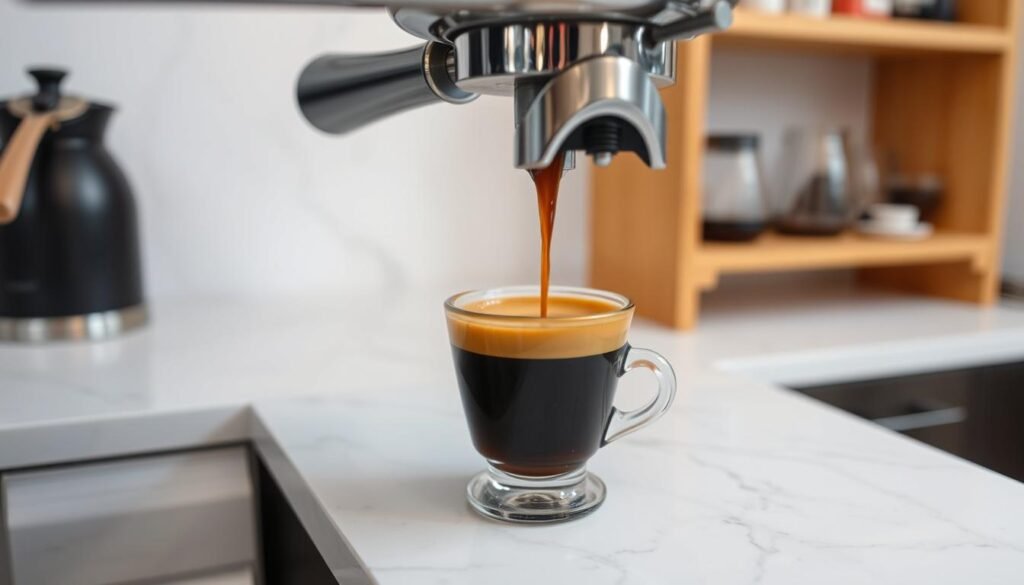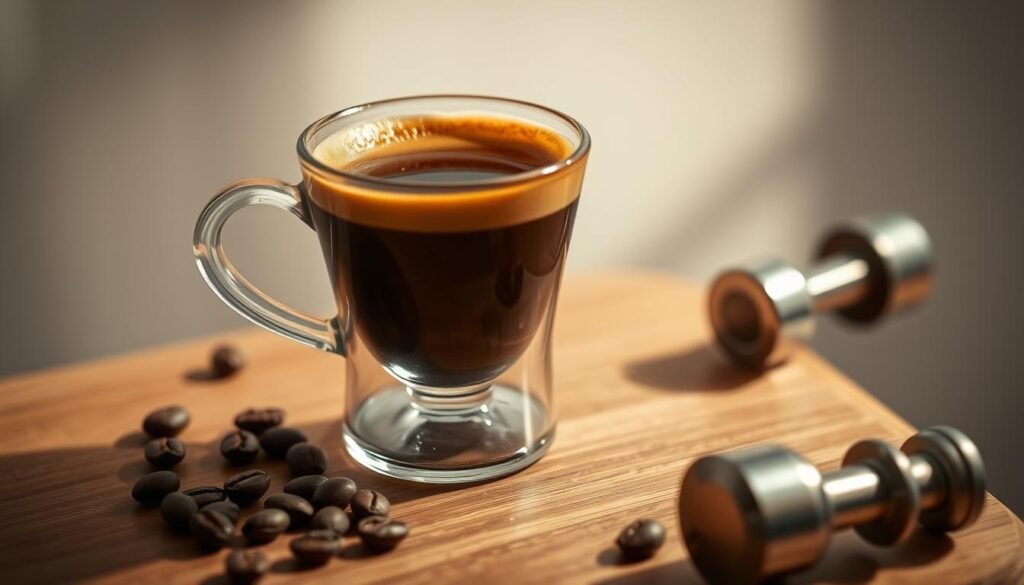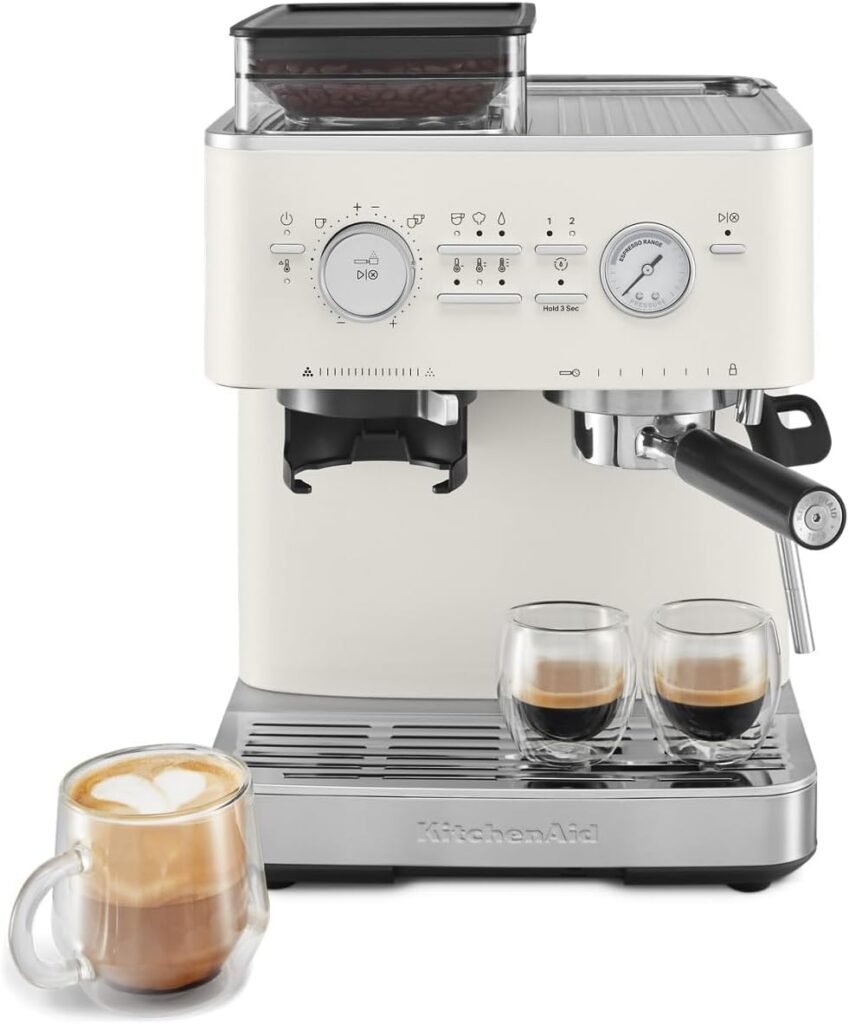Have you ever wondered what sets apart a good espresso from a great one? The answer lies in the brew ratio, a crucial factor that can make or break your coffee experience.
As a coffee enthusiast, understanding the ideal ratio of coffee grounds to liquid espresso is key to unlocking the perfect shot. By adjusting this ratio, you can manipulate the taste and mouthfeel of your coffee, taking your home brewing skills to the next level.
Mastering the art of espresso brewing requires precision and a deep understanding of how different ratios affect the extraction process. With the right guidance, you can achieve consistent results and personalized flavor profiles that will elevate your coffee game.
Key Takeaways
- Understanding the importance of brew ratio in espresso making
- Learning how to adjust the ratio to suit your taste preferences
- Discovering how to achieve consistent results with the right brew ratio
- Exploring the impact of different ratios on the extraction process
- Mastering the art of espresso brewing with precision and control
What Are Espresso Brew Ratios?
The ratio of coffee to water in espresso brewing is a critical factor that affects the taste and quality of your espresso. Understanding this concept is vital for achieving a perfect shot.
The Definition of Brew Ratio
A brew ratio refers to the proportion of coffee to water used in brewing espresso. It’s typically expressed as a ratio of coffee to water, such as 1:2 or 1:3, where the first number represents the weight of coffee grounds and the second number represents the weight of the espresso beverage. For instance, a 1:2 ratio means that for every gram of coffee, you’ll produce 2 grams of espresso.
Weight vs. Volume Measurement
When it comes to measuring coffee and water, there are two approaches: weight and volume. While volume measurements can be convenient, they’re not as accurate as weight measurements. Using a scale to measure the weight of coffee and water ensures precision, which is crucial for achieving consistent results.

The Importance of Precision
Precision is key when it comes to brew ratios. Even small variations in the ratio can significantly impact the extraction and flavor of your espresso. By measuring your coffee and water accurately, you can make methodical adjustments to dial in your ideal shot. This level of precision also enables you to troubleshoot issues and achieve consistency, which is essential for professional espresso preparation.
| Brew Ratio | Extraction Level | Taste Profile |
|---|---|---|
| 1:1.5 | High | Bold and intense |
| 1:2 | Medium | Balanced and smooth |
| 1:3 | Low | Lighter and more diluted |
The Best Espresso Shot Ratio for Different Preferences
The perfect espresso shot ratio is a matter of personal taste, and understanding the different options can elevate your coffee experience. Espresso enthusiasts often debate the ideal ratio, but the truth is that it depends on individual preferences.
Ristretto (1:1 to 1:1.5) – Bold and Intense
A ristretto shot is characterized by its bold and intense flavor profile. With a brew ratio of 1:1 to 1:1.5, ristretto shots use less water than traditional espresso, resulting in a more concentrated beverage. This style is ideal for those who prefer a strong, rich coffee.
Normale (1:2 to 1:2.5) – Balanced and Classic
The normale espresso shot ratio is considered classic and balanced. With a ratio of 1:2 to 1:2.5, normale shots offer a harmonious balance between the coffee’s flavor and the water’s dilution. This is a great starting point for those new to espresso or looking for a traditional taste.
Lungo (1:3 to 1:4) – Lighter and More Diluted
A lungo shot is a larger espresso shot pulled at a higher brew ratio, resulting in a cup twice the size of a regular espresso shot. The ratio of coffee to water in a lungo is typically between 1:3 and 1:4. Lungo shots work well for light-roasted coffees and complex single origins, as they increase the drink’s clarity and highlight the coffee’s nuances.
To illustrate the differences between these ratios, consider the following table:
| Espresso Style | Brew Ratio | Coffee (grams) | Espresso Yield (grams) |
|---|---|---|---|
| Ristretto | 1:1 to 1:1.5 | 18 | 18-27 |
| Normale | 1:2 to 1:2.5 | 18 | 36-45 |
| Lungo | 1:3 to 1:4 | 18 | 54-72 |

By understanding the different espresso shot ratios, you can experiment and find the perfect balance for your taste preferences. Whether you prefer a bold ristretto, a balanced normale, or a lighter lungo, the key is to experiment and enjoy the process of discovering your ideal espresso.
How Ratio Affects Your Espresso’s Taste
The brew ratio plays a significant role in shaping the flavor profile of espresso. Adjusting the ratio can dramatically change the taste experience, offering a range of flavors from intense and bold to smooth and subtle.
Extraction Science: What Happens in the Puck
During extraction, water passes through the coffee grounds, dissolving various compounds that contribute to the flavor and aroma. The ratio affects how much of these compounds are extracted, influencing the overall taste. A higher ratio (more water) results in a lighter, more diluted taste, while a lower ratio (less water) yields a stronger, more concentrated flavor.
Mouthfeel and Body Differences
The brew ratio also impacts the mouthfeel and body of the espresso. A ristretto shot (1:1 to 1:2 ratio) is typically thick and creamy, while a lungo shot (1:3 to 1:4 ratio) is lighter and more watery. The normale ratio (1:2 to 1:3) strikes a balance, offering a rich yet balanced mouthfeel.
Flavor Profile Changes Across Ratios
Different ratios bring out distinct flavor profiles in espresso. For instance, a ristretto emphasizes sweetness and brightness, minimizing bitterness. In contrast, a lungo can reveal subtle flavor notes and increase clarity, albeit at the expense of intensity. The table below illustrates how different ratios affect the flavor profile:
| Ratio | Flavor Profile |
|---|---|
| Ristretto (1:1 to 1:2) | Sweet, bright, minimal bitterness |
| Normale (1:2 to 1:3) | Balanced acidity, sweetness, and bitterness |
| Lungo (1:3 to 1:4) | Subtle flavor notes, increased clarity |
Experimenting with different ratios can reveal new dimensions in familiar coffees, allowing enthusiasts to tailor their espresso to their taste preferences.
Essential Equipment for Perfect Ratio Control
Achieving the perfect espresso shot ratio requires not just skill, but also the right equipment. To dial in the ideal ratio, baristas must have control over several key variables.
Precision Scales and Their Importance
A precision scale is crucial for measuring both the dose of coffee and the yield of the espresso shot. This ensures that the brew ratio is accurate, which is fundamental for achieving consistency in the taste of the espresso. By using a scale, baristas can adjust the ratio to suit different coffee beans and roasting levels.
Grinders and Grind Size Consistency
The grinder is another vital piece of equipment. It must produce a consistent grind size to ensure even extraction. Inconsistent grind sizes can lead to channeling and uneven extraction, negatively affecting the flavor. A high-quality grinder allows for adjustments in grind size, which is necessary for different brewing techniques and ratios.
Pressure and Temperature Considerations
Pressure and temperature are also critical factors. La Marzocco machines, for example, are set to brew espresso at 9 bars of pressure and 200°F (93°C). Maintaining consistent pressure and temperature is essential for reproducible results. Adjusting these parameters can enhance extraction at different ratios, and understanding when to deviate from standard settings is key to optimizing the espresso brewing process.
Creating Your Personal Espresso Recipe
To create your ideal espresso, you need to understand the intricacies of brew ratios and extraction times. This involves a combination of technical knowledge and experimentation to find the perfect balance for your taste preferences.
Determining Your Ideal Dose
The first step in crafting your personal espresso recipe is determining the ideal dose. This refers to the amount of coffee used for your shot. A standard dose can range from 14 to 20 grams, depending on the equipment and desired strength. Precision is key when measuring your dose, as it directly affects the flavor and quality of your espresso.
Calculating Your Target Yield
Once you’ve determined your ideal dose, the next step is to calculate your target yield. The yield is the amount of espresso produced, and it’s typically measured in grams. A common target yield is between 1:2 to 1:3 of the dose. For example, if you’re using 18 grams of coffee, your target yield would be between 36 to 54 grams of espresso. Adjusting the yield allows you to fine-tune the flavor profile to your liking.
Finding Your Sweet Spot Extraction Time
Extraction time plays a crucial role in the flavor of your espresso. Typically, espresso does best when reaching the target brew ratio in 25-35 seconds. If your shot is too quick (less than 20 seconds), it may be under-extracted and taste sour. Conversely, if it’s too slow (more than 40 seconds), it may be over-extracted and taste bitter. To adjust, you can modify the grind size: finer for slower shots and coarser for faster shots.
- Monitor your extraction time to ensure it’s within the optimal range.
- Adjust your grind size to control the flow rate and achieve the desired extraction time.
- Experiment with different ratios and extraction times to find your perfect balance.
By mastering these elements, you’ll be able to create a personalized espresso recipe that suits your taste preferences.
Advanced Ratio Techniques for Espresso Enthusiasts
To refine your espresso experience, consider delving into advanced ratio techniques. These methods allow for a more nuanced exploration of flavor profiles and can significantly enhance your brewing skills.
Turbo Shots: Quick Extraction at 1:1.5
Turbo shots involve a 1:1.5 brew ratio and are designed for quick extraction. This technique is ideal for those seeking a bold and intense espresso experience. By adjusting the grind size and tamping, you can achieve a perfectly balanced shot in a shorter timeframe.
Blooming Espresso: Pre-Infusion Benefits
Blooming espresso, or pre-infusion, is a technique that involves initially wetting the coffee grounds before the main extraction. This process can lead to a more even extraction and a richer flavor profile. By allowing the coffee to “bloom,” you can enhance the overall quality of your espresso.
Low-Pressure Extractions for Smoother Results
Low-pressure extractions utilize reduced pressure, typically around 6 bars, to create a gentler and smoother extraction. For instance, using 19g of coffee to yield 48g of espresso at a 1:2.5 ratio can highlight sweetness and reduce bitterness. This technique is particularly effective with medium to dark roasts, producing a nuanced and approachable espresso experience.
By experimenting with these advanced ratio techniques, you can discover new dimensions of flavor and refine your espresso brewing skills. Whether you’re using turbo shots, blooming espresso, or low-pressure extractions, the key to success lies in understanding the intricacies of the brewing process and adjusting parameters accordingly.
- Experiment with different brew ratios to find your ideal flavor profile.
- Adjust grind size and tamping to optimize extraction.
- Consider the roast level of your coffee when choosing a brewing technique.
Troubleshooting Common Ratio Problems
Troubleshooting common ratio problems is crucial for achieving consistent espresso quality. Even experienced baristas encounter issues that affect their brew ratio. I’ll outline some common problems and their solutions to help you refine your technique.
When Your Shot Runs Too Fast
If your espresso shot runs too quickly, it may be due to a grind that’s too coarse or a dose that’s too low. Adjusting your grind size to a finer setting or increasing your dose can help achieve a better extraction.
When Your Shot Runs Too Slow
Conversely, if your shot runs too slowly, your grind might be too fine or your dose too high. Try adjusting your grind size to a coarser setting or reducing your dose to improve the flow.
Achieving Consistency Day After Day
To maintain consistency in your espresso, it’s essential to minimize variables in your brewing process. This includes using fresh coffee grounds, storing them properly, and being mindful of environmental factors like humidity and temperature. Keeping detailed notes on your adjustments and results will also help you refine your technique over time.
Conclusion
The journey to the perfect espresso shot begins with grasping the concept of brew ratios. Understanding and controlling the ratio of coffee to water is fundamental to achieving the desired taste and quality in your espresso. Throughout this article, we’ve explored how different brew ratios serve various purposes and cater to different preferences, from the bold ristretto to the lighter lungo.
To elevate your espresso brewing experience, it’s essential to experiment with different ratios and precision equipment to find your ideal balance. By mastering ratio control, you open the door to endless exploration of coffee’s potential. I encourage you to apply these principles and discover your personal preferences, ultimately becoming an espresso master.
With consistent technique and the right equipment, you’ll be able to replicate your desired espresso shot and continue to refine your brewing skills. The art of espresso brewing is a journey, and understanding the ratio is just the beginning.


